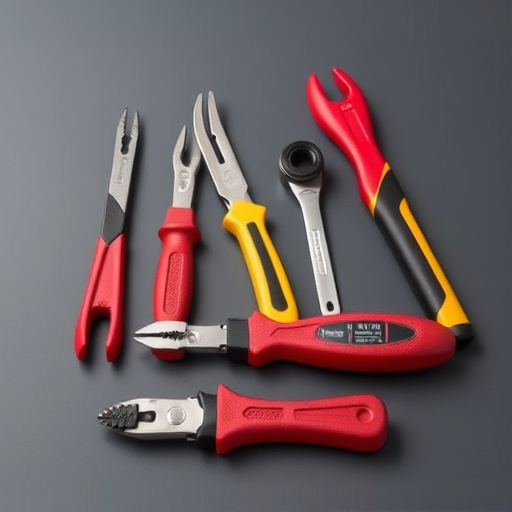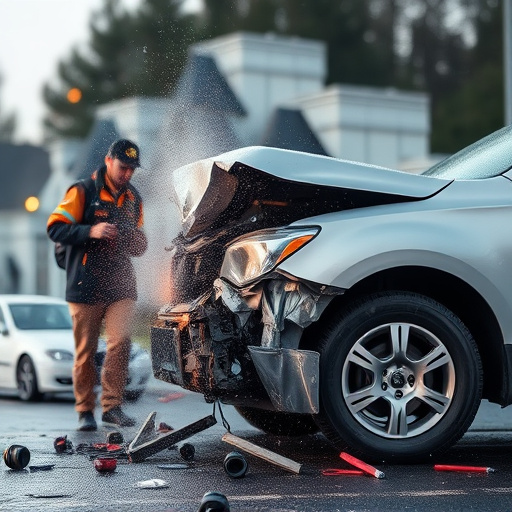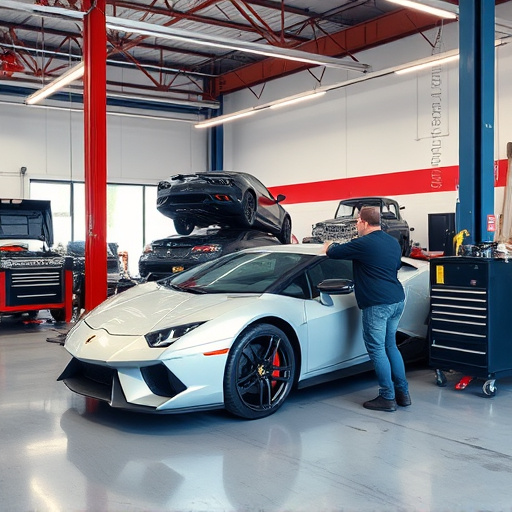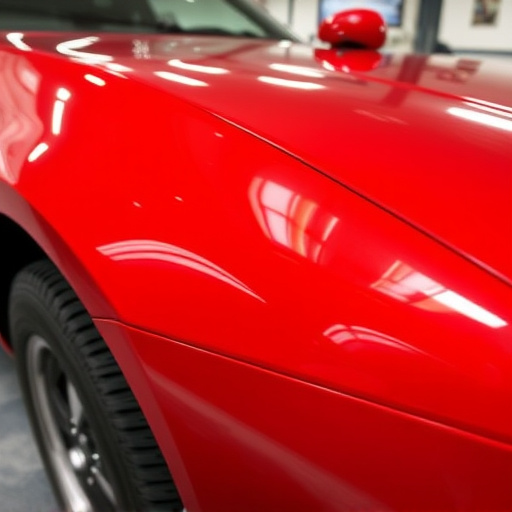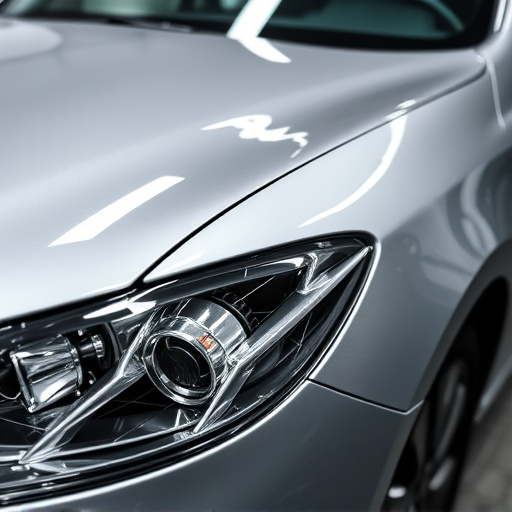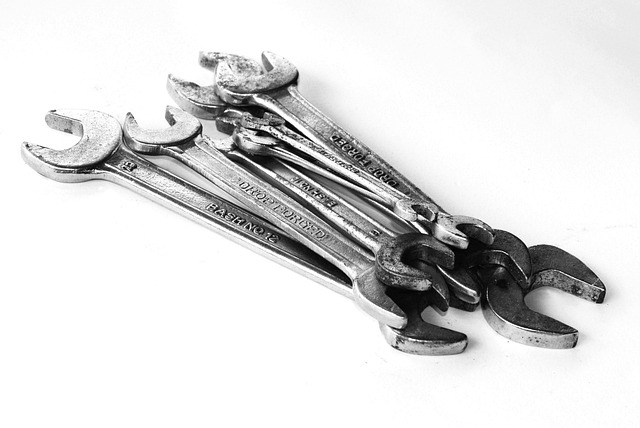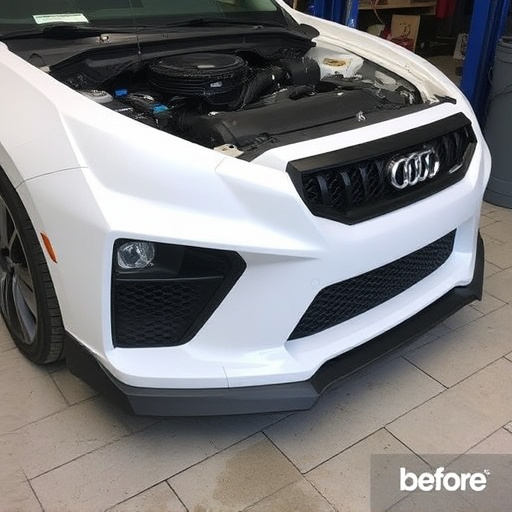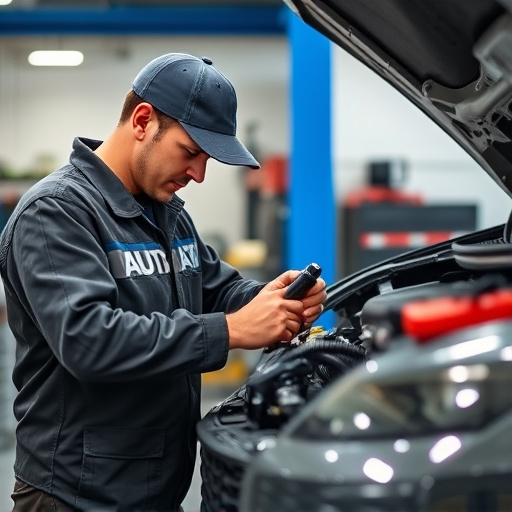Fender dent repair begins with a thorough assessment using advanced tools to gauge damage severity, from shallow dents to severe buckling. The right repair method is chosen, ranging from paintless dent removal (PDR) for shallower dents to welding or panel replacement for severe cases. Using appropriate tools and techniques ensures aesthetic and structural integrity, with final buffing and clear coat application for a flawless finish.
“Discover the art of achieving a perfect finish with our comprehensive guide to Fender dent repair. Understanding damage assessment is key; inspect for size, depth, and location of dents. Once identified, select the ideal repair method—from simple DIY techniques to professional body shop procedures. Learn about essential tools, versatile putty, and expert painting tips for a seamless restoration. Master these skills and say goodbye to unsightly fender dents.”
- Assessing Fender Damage: What to Look For
- Choosing the Right Repair Method: Tools and Techniques
- Achieving a Flawless Finish: Tips for Expert Results
Assessing Fender Damage: What to Look For

When it comes to fender dent repair, the first step is assessing the damage accurately. Key elements to look for include the size and depth of the dent, as well as the extent of the surrounding panel damage. A simple fender bender might only result in a shallow indent, while more severe collisions can cause buckling or even crumple the metal.
Inspecting closely for signs of rust or prior repairs is also crucial. Rust can weaken the structure and complicate repair efforts, while hidden cracks or weak spots may indicate deeper structural issues. An auto body shop with experienced technicians will employ various tools, from magnifying glasses to digital imaging software, to thoroughly evaluate the fender before proceeding with the best fender dent repair technique for a perfect finish.
Choosing the Right Repair Method: Tools and Techniques

Choosing the right repair method is a crucial step in achieving a perfect finish for your fender dent repair. The first consideration is assessing the extent of the damage. Deep, complex dents might require more advanced techniques like metal shaping or patching, while shallower dents can often be effectively repaired using simpler methods such as paintless dent removal (PDR). PDR uses specialized tools to push out the dent from behind the fender without damaging the surface, making it an ideal choice for minor dents and dings.
For more severe cases, traditional auto repair services may involve welding or replacing the affected panel. It’s essential to have the right tools for the job, including a set of high-quality PDR tools, a welder (for replacement or major repairs), sandpaper, primer, paint, and a clear coat. Using these tools correctly and with precision ensures that your fender dent repair not only looks good but also retains the vehicle’s original finish and structural integrity.
Achieving a Flawless Finish: Tips for Expert Results

Achieving a Flawless Finish: Tips for Expert Results
After selecting the appropriate fender dent repair technique for your Mercedes Benz or other vehicle, it’s crucial to focus on achieving a flawless finish. Start by ensuring your work area is clean and free from debris. This step is vital as any foreign particles can compromise the final look. Use fine-grit sandpaper to gently buff the repaired area until it matches the car’s original surface. Pay close attention to corners, edges, and contours for consistent results.
For a truly professional touch, consider using a clear coat or sealer designed for car body repair. This adds an extra layer of protection and helps to lock in the repair, enhancing its longevity. Remember, patience is key; allowing adequate drying time between applications will result in a more durable and aesthetically pleasing finish, whether it’s for a minor dent repair or extensive car body repair.
Fender dent repair is an art that, when mastered, can transform damaged cars into like-new conditions. By understanding the various techniques and choosing the right approach based on vehicle aesthetics, you can achieve a flawless finish. Whether using traditional methods or modern tools, proper assessment and meticulous attention to detail are key. With the right knowledge and resources, anyone can learn effective fender dent repair skills, ensuring their vehicles maintain a pristine exterior.
